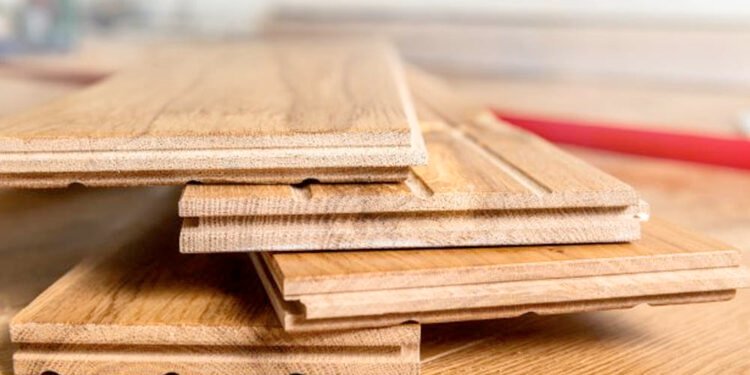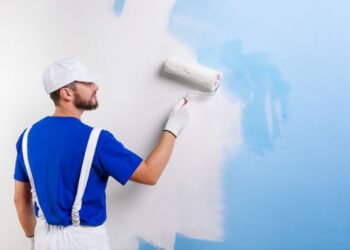When it comes to choosing the right flooring for your home, hardwood stands out as a timeless and sophisticated option. But when you delve into the world of hardwood floors, you hit a fork in the road: solid hardwood versus engineered hardwood. Both have their merits and drawbacks, and the best choice depends on various factors like your living conditions, budget, and personal taste. Let’s break down the essentials to help you decide which floor is the master of your domain.
What is Engineered Hardwood Flooring
Engineered hardwood flooring features a thin hardwood layer atop multiple plywood or composite layers, enhancing stability and reducing warping.
Advantages of Engineered Hardwood Floors:
- Moisture Resistance: Better suited for humid areas or places that might see water spills.
- Easier Installation: Many engineered woods come with a click-lock system, making DIY installation feasible.
- Cost-Effectiveness: Generally cheaper than solid hardwood in both materials and installation.
- Dimensional Stability: The layered construction reduces the risk of warping and makes it suitable for a variety of climates.
Disadvantages of Engineered Hardwood Floors:
- Limited Refinishing Potential: You can only refinish so many times before you wear through to the plywood underneath.
- Perceived Lack of Authenticity: Some might not consider it “real” hardwood, since only the top layer is hardwood.
- Shorter Lifespan: Generally lasts 20 to 40 years, which is less than the lifetime durability of solid hardwood.
What is Solid Hardwood Flooring
Solid hardwood is exactly what it sounds like: each plank is a solid piece of wood, typically 3/4 to 1 inch thick, cut straight from the tree. Popular choices include species like oak, maple, and cherry.
Advantages of Solid Hardwood Floors:
- Durability and Longevity: These floors are tough cookies. With proper care, they can last generations.
- Refinishing Potential: You can sand and refinish them multiple times. Want a new look? No need to replace—just refinish.
- Increased Home Value: They’re a coveted feature that can increase your home’s resale value.
- Natural Appearance: The unique grain and texture of each plank offer unmatched natural beauty.
Disadvantages of Solid Hardwood Floors:
- Moisture Sensitivity: They don’t take kindly to humidity or water. Think twice before installing them in a basement or bathroom.
- Installation Complexity: Typically, they require nailing down, which can be a challenging and costly process.
- Higher Cost: All that wood doesn’t come cheap, both in terms of material and installation.
Choosing Solid vs. Engineered Hardwood Floors: Key Factors
- Intended Use of the Space: High moisture or fluctuating temperatures? Engineered might be your best bet. Otherwise, solid wood provides a classic look.
- Subfloor Condition: Engineered wood is more forgiving if your subfloor isn’t perfectly level or if it has some imperfections.
- Budget: If you’re watching your wallet, engineered hardwood generally offers a more cost-effective solution.
- Desired Appearance: If you want the traditional charm of wood floors, solid hardwood offers depth and the warm aesthetics that only real wood can.
- Future Renovations: Planning on changing the look of your floors down the road? Solid hardwood is easier to sand and refinish.
- Longevity and Durability: For a long-term investment, solid hardwood is often preferred for its durability over decades.
Caring for Engineered and Solid Hardwood Floors
Proper care and maintenance are essential for preserving the beauty and lifespan of both solid and engineered hardwood floors. Here are some tips:
Engineered Hardwood Floors:
- Regular Cleaning: Sweep or vacuum regularly to remove dirt and debris. This helps prevent scratching and maintains the appearance of the floor.
- Periodic Deep Cleaning: Clean the floors periodically with a damp mop and a cleaner specifically formulated for hardwood floors to remove any accumulated dirt or stains.
- Moisture Management: Avoid excessive moisture exposure, as it can cause the wood layers to swell or get damaged. Wipe up spills quickly and use mats in high-moisture areas like kitchens and bathrooms.
- Refinishing: Engineered floors can be refinished if they get worn or scratched, but it’s important to be cautious due to the thinner veneer layer on top. Consult a professional to determine if your floor’s veneer can withstand refinishing.
Solid Hardwood Floors:
- Regular Cleaning: Similar to engineered floors, regular sweeping or vacuuming is essential to remove dirt and debris, preventing surface damage. For more extensive cleaning solutions, understanding what is a walk behind floor scrubber can provide additional insights into maintaining various types of flooring effectively.
- Periodic Deep Cleaning: Use a damp mop and a hardwood floor cleaner designed for solid hardwood to clean the floors periodically. This helps maintain their shine and overall health.
- Avoid Moisture: Excessive moisture can severely damage solid hardwood, leading to warping or cupping of the planks. It’s crucial to manage humidity levels and address any spills promptly.
- Refinishing: Solid hardwood floors have the advantage of being refinished multiple times throughout their lifetime. Typically, refinishing is recommended every 5–10 years, depending on traffic and wear, to restore the floor’s original beauty and finish.
Conclusion
Choosing between solid and engineered hardwood floors is a significant decision that should be carefully considered. Both options offer unique advantages and disadvantages, and the right choice for your home will depend on factors such as the intended use of the space, your budget, and your personal preferences. Solid hardwood floors provide a traditional, natural look and feel, with exceptional durability and the ability to be refinished multiple times. Engineered hardwood floors offer greater moisture resistance, easier installation, and a more cost-effective solution, making them a practical choice for a wider range of applications.












